#girija devi
Explore tagged Tumblr posts
Text
Echoes of Emotion: The Life and Legacy of Girija Devi
Girija Devi: The Thumri Queen
Girija Devi, born on May 8, 1929, in Varanasi, was a legendary Hindustani classical vocalist renowned for her mastery of semi-classical genres, particularly Thumri. She is affectionately referred to as the "Thumri Queen," a title that underscores her significant role in popularizing and reviving this emotive form of music.

Early Life and Musical Journey
From an early age, Girija showed a passion for music, encouraged by her father, Ramdeo Rai, who was a music enthusiast. She began her formal training at the tender age of five under the guidance of eminent musicians like Sarju Prasad Misra. Despite societal norms that discouraged women from performing publicly, Girija's family supported her aspirations, allowing her to embark on a career that would break barriers.
Girija Devi made her debut performance in 1949 at All India Radio in Allahabad, quickly gaining recognition for her emotional delivery and technical skill. Her singing was characterized by its fluidity and deep connection to the lyrics, which often explored themes of love and devotion.
Career Highlights and Notable Songs
Throughout her illustrious career, Girija Devi performed at numerous prestigious platforms, both nationally and internationally. She brought Thumri, once relegated to the confines of courtesan culture, into mainstream Indian classical music. Some of her most famous songs include:
"Babul Mora Naihar Chhooto Jaye": A heartfelt thumri that expresses the bittersweet emotions of leaving one's parental home.
"Piya Ke Milan Ki Aas": A beautiful depiction of longing and anticipation of a lover's arrival.
"Hori Khelat Nandlal": A lively celebration of the festival of Holi, showcasing her ability to blend joy with musical depth.
Girija's renditions were not just performances; they were profound expressions that resonated deeply with audiences, making her one of the most sought-after artists in the realm of Hindustani music.
Awards and Recognition
Her contributions to music did not go unnoticed. Girija Devi received numerous accolades, including:
Padma Shri in 1972
Padma Bhushan in 1989
Padma Vibhushan in 2016
Additionally, she was awarded the Sangeet Natak Akademi Award and the Sangeet Natak Akademi Fellowship, recognizing her efforts in preserving and promoting Indian classical music.
Teaching and Legacy
In her later years, Girija Devi became a revered mentor, teaching at institutions like the ITC Sangeet Research Academy in Kolkata. She inspired countless students, instilling in them the values of tradition and emotion that defined her music. Her students, including notable names like Sunanda Sharma, continue to carry forward her legacy.
Girija Devi passed away on October 24, 2017, but her influence remains pervasive in the world of Indian classical music. Her ability to blend emotion with technical excellence has left an indelible mark on the genre.
Tune In to Celebrate Her Legacy
To experience the captivating artistry of Girija Devi, listen to her timeless songs on Ruh Radio at 1440 AM. We feature her remarkable performances, including her soulful renditions of Thumri and other semi-classical genres. Join us as we celebrate her legacy and keep her music alive for new generations of listeners.
By tuning in, you not only enjoy her enchanting melodies but also connect with the rich traditions of Hindustani classical music that she so passionately represented.
And don't forget to Like and Follow us on Instagram and Facebook.
0 notes
Text
0 notes
Text
[ad_1] The Lieutenant Governor of Jammu and Kashmir, Shri Manoj Sinha, described the renowned writer and Member of Parliament, the late Shri Shankar Dayal Singh, as a "saintly author" and praised his total dedication to truth. He said that Singh never allowed relationships to stand in the way of truth in his writing. He was unwavering in his commitment to truth, and his words and works left an indelible mark on Indian politics and society. L to R: Rashmi Singh (IAS), Sanjay Singh Former MP, Kiran Chopra Shankar Dayal Singh served as a Member of Parliament from 1971 to 1977, and during his tenure, he witnessed the Emergency period in India. His book "Emergency: Kya Sach, Kya Jhoot" is a reflection of the political events of that time and his personal experiences. In the introduction to the book, Singh expressed his inner voice, writing, "My frankness may cause some controversy, and my friends may also face difficulties. But what can I do? The pain of truth that lies hidden beneath the political skin of my soul constantly pricks me." This courage to speak the truth is something only a saintly writer could do as observed by the Chief Guest, Sh. Manoj Sinha ji. L to R: LG Manoj Sinha, Swami Chidanand Saraswat During the event, Swami Chidanand Saraswati of Parmarth Niketan, Haridwar, reminisced about his association with Shankar Dayal Singh. He shared that he was introduced to Singh by the eminent jurist Dr. Laxmimall Singvi when Dr. Singvi was the Indian Ambassador to the United Kingdom. It was at Dr. Singvi's encouragement that work on the Hindu World Encyclopedia began, and Shankar Dayal Singh was an integral part of the team formed for this project. Swami Ji further stated that Singh's creative contribution to this encyclopedia was significant. Reflecting on Singh’s sudden passing, Swami Ji added that, like a traveler, Singh had embarked on his final journey as if guided by divine will. L to R: Ranjan kumar singh, (son of Dr Shankar Dayal Singh), Swami Chidanand Saraswat, LG Manoj Sinha, Rashmi Singh IAS (daughter of Dr Shankar Dayal Singh) Girija Devi former MP At the beginning of the program two minutes of silence was observed as a tribute to Former Prime Minister of India Sh. Manmohan Singh Ji. The Main Theme of the Lecture This year’s "Shankar Dayal Singh Memorial Lecture 2024" focused on the theme “Hamari Jarurate aur Chahte”. As the keynote speaker, Pujya Swami Chidanand Saraswati explained that life is not about accumulation but about relationships. He stressed that if we begin to focus on accumulation, we fall prey to our desires. Only by living through relationships can we truly understand and recognize our needs. Lieutenant Governor Shri Manoj Sinha also emphasized that accumulation is a kin to a disease, and people in Western countries are now seeking ways to break free from it. He pointed out that the advertising industry presents our desires as needs, trapping us in this cycle. At the start of the event, Ranjan Kumar Singh son of Sh. Shankar Dayal Singh who is an author & a film maker welcomed the guests, noting that despite the rain, the large turnout was a testament to people’s commitment to the event and its core values. Dr. Rashmi Singh, daughter of Sh. Shankar Dayal Singh who is an IAS Officer and currently posted as a Commissioner/Secretary & Principal Resident Commissioner, Jammu & Kashmir Government delivered the vote of thanks. She ended her heartfelt appreciation for the guests with a quote from her father’s book. The event was moderated in a very graceful manner by Dr. Vartika Nanda, Head, Dept. of Journalism, Lady Shree Ram College. Distinguished gathering Amongst some the Prominent Attendees a wide cross section of society were represented covering academicians, VCs, Scholars, researchers, Artist, Media, other influencers etc. To name a few- Politicians- Mr.
Sanjay Paswan (Former Minister of State, GOI & currently MLC in Bihar), Sh. Akhilesh Prasad Singh (Member of Parliament), Sh. Virendra Singh (Former MP from Bihar), Mrs. Girja devi (former member of parliament), Dr. Sanjay Singh (Former Member of Parliament), Sh. Santosh Bhartiya (Former Member of Parliament). Senior Bureaucrats: Smt. Usha Sharma, (Former Chief Secretary Rajsthan), Sh. SS Sirohi (former Secretary GOI), Mr. Deepak Sehgal (Former CS Uttar Pradesh) Dr. P. K. Singh (Agriculture Commissioner in GOI), Sh. Navneet Sahgal (Chairman of Prasar Bharti), and other senior officers like B. N. Sharma (Rajasthan Cadre), Aradhana Shukla) and Pradeep Shukla (UP Cadre). Academician and Writers like Dr. Dinesh Singh (Former Vice Chancellor of Delhi University), Dr. Manisha Priyam (Scholar and Political analyst), Dr. Bipin Kumar (Vishva Hindi Parishad), Dr. Aditi Narayani Paswan (Prof. DU), Mr. Gajendra Solanki (Poet), Mr. Prabhat Kumar (Prabhat Prakashan), Mrs. Puja Chauhan & Mrs. Divya Chauhan (Amity University), Prof. Dhanajay Joshi (V.C. Delhi Teachers University), Dean of Gautam Buddha University, besides other senior, scholars & researchers. Social Activists like Ms. Namita Gautam (Chairman of Sleepwell Foundation), Mrs. Rekha Mody (Founder of Stree Shakti), Mr. Kumar Dilip (President of Sulabh International Social Service Organization), Secretary General Bahai Sh. Merchant, Mr. Ravindra Pandita (Save Sharda Committee, J&K), Mr. Abhay Sinha (JP Memorial), Mr. Avinash Tiku (Regional Coordinator of Art of Living), Sadhvi Deepika Bharti (Divya Jyoti Jagriti Sansthan). Media and other Influencers like Mrs. Kiran Chopra (Punjab Keshari), Ms. Farzana Mumtaz (Kashmir News), 1st Mrs. India from Jammu and Kashmir Meenu Mahajan, Avantika Midha (Council of Royal Rootes)) and many other prominent Media Personalities, artists and senior representatives from industry and trade bodies like PhD Chambers, FICCI. Remembering Shankar Dayal Singh Shankar Dayal Singh passed away on November 26, 1995, and since then, this lecture series has been organized consistently every year on his birthday (December 27). This year, the event once again drew a large crowd. In past events, prominent figures from the world of literature, politics, and education have graced the platform as keynote speakers and Guests of Honor including dignitaries like, the then Vice Presidents Shri Krishan Kant and Shri Bhairon Singh Shekhawat, former Prime Ministers and Shri Chandra Shekhar and Shri Indra Kumar Gujral, Philosopher and scholars like Dr. Karan Singh, Dr. Laxmimal Singvi, Shri Vinay Sahastrabuddhe and Other distinguished speakers included the then Lok Sabha Speaker Shri Shivraj Patil, Smt. Meira Kumar, Vice Chairperson of Rajya Sabha, Dr. Najma Heptulla, former Union Ministers Shri Yashwant Sinha, Shri Bhishma Narayan Singh, Sh Yashwant Sinha, Shri Shatrughan Sinha, Shri Ram Vilas Paswan, Shri Satyanarayan Jatiya, Shri C.P. Thakur, General V.K. Singh, Shri Janeshwar Mishra, Shri Rajiv Pratap Rudy, Former Chief Minister Smt. Sheila Dikshit, Sh. Manish Sisodia as Education Minister of Delhi as well as Scholars, Writers and social activists like Dr. Namwar Singh, Shri Ved Prakash Vaidik, Shri Ram Bahadur Rai, Dr. Kedar Nath Singh, Shri Himanshu Joshi, Shri Bindeshwar Pathak. The Shankar Sanskriti Pratishthan event has also been held at the Rashtrapati Bhavan under the presence of her Excellency, President Smt. Pratibha Patil. Last year, the Governor of Kerala, Honorable Arif Mohammad Khan, delivered a scholarly speech on the topic of "Sarvadharma Sambhav and Our Constitution." In 2018, Shri Rajnath Singh, the then Home Minister, was the chief guest at this event. On the occasion of 27th December 2024 this year, Shankar Dayal Singh's literary and political contributions were discussed with admiration, reminding everyone of his significant role as a bridge between literature and politics. Tributes were paid not
only for his works and his dedication to Gandhian ideals but also for his vital services for promoting Hindi and other regional languages in his individual capacity and in capacity - as Vice-Chairman of the Parliamentary Official Language Committee. His contributions to cultural, social, and educational institutions leaving a lasting impact were recognized. As a pioneer for promoting girls’ education in Bihar leader, his unwavering dedication to promoting girls' education in Bihar led to the successful seting up of several institutions from their foundation stage. Such as he served as chairman from foundational stage at the Girls Residential School in Lakhisarai. Some notable institutions that benefited from his vision and leadership include: Madhusthali Residential Schools in Madhupur, which has become a model for residential education. Balika Vidyapeeth in Deoghar, a premier institution dedicated to empowering girls through education. Through his tireless efforts, Dr. Shankar Dayal Singh has left a lasting impact on the educational landscape of Bihar, inspiring countless youth to pursue their dreams and aspirations. His legacy continues to inspire future generations, by specially with his motivational writings and speeches. His deep faith in religion and philosophy was evident throughout his life. He organized the Viraat Hindu Sammelan at Patna’s Gandhi Maidan, bringing together people from across the country in the spirit of unity with a motto of serving for humanity. !function(f,b,e,v,n,t,s) if(f.fbq)return;n=f.fbq=function()n.callMethod? n.callMethod.apply(n,arguments):n.queue.push(arguments); if(!f._fbq)f._fbq=n;n.push=n;n.loaded=!0;n.version='2.0'; n.queue=[];t=b.createElement(e);t.async=!0; t.src=v;s=b.getElementsByTagName(e)[0]; s.parentNode.insertBefore(t,s)(window,document,'script', 'https://connect.facebook.net/en_US/fbevents.js'); fbq('init', '311356416665414'); fbq('track', 'PageView'); [ad_2] Source link
0 notes
Text
[ad_1] The Lieutenant Governor of Jammu and Kashmir, Shri Manoj Sinha, described the renowned writer and Member of Parliament, the late Shri Shankar Dayal Singh, as a "saintly author" and praised his total dedication to truth. He said that Singh never allowed relationships to stand in the way of truth in his writing. He was unwavering in his commitment to truth, and his words and works left an indelible mark on Indian politics and society. L to R: Rashmi Singh (IAS), Sanjay Singh Former MP, Kiran Chopra Shankar Dayal Singh served as a Member of Parliament from 1971 to 1977, and during his tenure, he witnessed the Emergency period in India. His book "Emergency: Kya Sach, Kya Jhoot" is a reflection of the political events of that time and his personal experiences. In the introduction to the book, Singh expressed his inner voice, writing, "My frankness may cause some controversy, and my friends may also face difficulties. But what can I do? The pain of truth that lies hidden beneath the political skin of my soul constantly pricks me." This courage to speak the truth is something only a saintly writer could do as observed by the Chief Guest, Sh. Manoj Sinha ji. L to R: LG Manoj Sinha, Swami Chidanand Saraswat During the event, Swami Chidanand Saraswati of Parmarth Niketan, Haridwar, reminisced about his association with Shankar Dayal Singh. He shared that he was introduced to Singh by the eminent jurist Dr. Laxmimall Singvi when Dr. Singvi was the Indian Ambassador to the United Kingdom. It was at Dr. Singvi's encouragement that work on the Hindu World Encyclopedia began, and Shankar Dayal Singh was an integral part of the team formed for this project. Swami Ji further stated that Singh's creative contribution to this encyclopedia was significant. Reflecting on Singh’s sudden passing, Swami Ji added that, like a traveler, Singh had embarked on his final journey as if guided by divine will. L to R: Ranjan kumar singh, (son of Dr Shankar Dayal Singh), Swami Chidanand Saraswat, LG Manoj Sinha, Rashmi Singh IAS (daughter of Dr Shankar Dayal Singh) Girija Devi former MP At the beginning of the program two minutes of silence was observed as a tribute to Former Prime Minister of India Sh. Manmohan Singh Ji. The Main Theme of the Lecture This year’s "Shankar Dayal Singh Memorial Lecture 2024" focused on the theme “Hamari Jarurate aur Chahte”. As the keynote speaker, Pujya Swami Chidanand Saraswati explained that life is not about accumulation but about relationships. He stressed that if we begin to focus on accumulation, we fall prey to our desires. Only by living through relationships can we truly understand and recognize our needs. Lieutenant Governor Shri Manoj Sinha also emphasized that accumulation is a kin to a disease, and people in Western countries are now seeking ways to break free from it. He pointed out that the advertising industry presents our desires as needs, trapping us in this cycle. At the start of the event, Ranjan Kumar Singh son of Sh. Shankar Dayal Singh who is an author & a film maker welcomed the guests, noting that despite the rain, the large turnout was a testament to people’s commitment to the event and its core values. Dr. Rashmi Singh, daughter of Sh. Shankar Dayal Singh who is an IAS Officer and currently posted as a Commissioner/Secretary & Principal Resident Commissioner, Jammu & Kashmir Government delivered the vote of thanks. She ended her heartfelt appreciation for the guests with a quote from her father’s book. The event was moderated in a very graceful manner by Dr. Vartika Nanda, Head, Dept. of Journalism, Lady Shree Ram College. Distinguished gathering Amongst some the Prominent Attendees a wide cross section of society were represented covering academicians, VCs, Scholars, researchers, Artist, Media, other influencers etc. To name a few- Politicians- Mr.
Sanjay Paswan (Former Minister of State, GOI & currently MLC in Bihar), Sh. Akhilesh Prasad Singh (Member of Parliament), Sh. Virendra Singh (Former MP from Bihar), Mrs. Girja devi (former member of parliament), Dr. Sanjay Singh (Former Member of Parliament), Sh. Santosh Bhartiya (Former Member of Parliament). Senior Bureaucrats: Smt. Usha Sharma, (Former Chief Secretary Rajsthan), Sh. SS Sirohi (former Secretary GOI), Mr. Deepak Sehgal (Former CS Uttar Pradesh) Dr. P. K. Singh (Agriculture Commissioner in GOI), Sh. Navneet Sahgal (Chairman of Prasar Bharti), and other senior officers like B. N. Sharma (Rajasthan Cadre), Aradhana Shukla) and Pradeep Shukla (UP Cadre). Academician and Writers like Dr. Dinesh Singh (Former Vice Chancellor of Delhi University), Dr. Manisha Priyam (Scholar and Political analyst), Dr. Bipin Kumar (Vishva Hindi Parishad), Dr. Aditi Narayani Paswan (Prof. DU), Mr. Gajendra Solanki (Poet), Mr. Prabhat Kumar (Prabhat Prakashan), Mrs. Puja Chauhan & Mrs. Divya Chauhan (Amity University), Prof. Dhanajay Joshi (V.C. Delhi Teachers University), Dean of Gautam Buddha University, besides other senior, scholars & researchers. Social Activists like Ms. Namita Gautam (Chairman of Sleepwell Foundation), Mrs. Rekha Mody (Founder of Stree Shakti), Mr. Kumar Dilip (President of Sulabh International Social Service Organization), Secretary General Bahai Sh. Merchant, Mr. Ravindra Pandita (Save Sharda Committee, J&K), Mr. Abhay Sinha (JP Memorial), Mr. Avinash Tiku (Regional Coordinator of Art of Living), Sadhvi Deepika Bharti (Divya Jyoti Jagriti Sansthan). Media and other Influencers like Mrs. Kiran Chopra (Punjab Keshari), Ms. Farzana Mumtaz (Kashmir News), 1st Mrs. India from Jammu and Kashmir Meenu Mahajan, Avantika Midha (Council of Royal Rootes)) and many other prominent Media Personalities, artists and senior representatives from industry and trade bodies like PhD Chambers, FICCI. Remembering Shankar Dayal Singh Shankar Dayal Singh passed away on November 26, 1995, and since then, this lecture series has been organized consistently every year on his birthday (December 27). This year, the event once again drew a large crowd. In past events, prominent figures from the world of literature, politics, and education have graced the platform as keynote speakers and Guests of Honor including dignitaries like, the then Vice Presidents Shri Krishan Kant and Shri Bhairon Singh Shekhawat, former Prime Ministers and Shri Chandra Shekhar and Shri Indra Kumar Gujral, Philosopher and scholars like Dr. Karan Singh, Dr. Laxmimal Singvi, Shri Vinay Sahastrabuddhe and Other distinguished speakers included the then Lok Sabha Speaker Shri Shivraj Patil, Smt. Meira Kumar, Vice Chairperson of Rajya Sabha, Dr. Najma Heptulla, former Union Ministers Shri Yashwant Sinha, Shri Bhishma Narayan Singh, Sh Yashwant Sinha, Shri Shatrughan Sinha, Shri Ram Vilas Paswan, Shri Satyanarayan Jatiya, Shri C.P. Thakur, General V.K. Singh, Shri Janeshwar Mishra, Shri Rajiv Pratap Rudy, Former Chief Minister Smt. Sheila Dikshit, Sh. Manish Sisodia as Education Minister of Delhi as well as Scholars, Writers and social activists like Dr. Namwar Singh, Shri Ved Prakash Vaidik, Shri Ram Bahadur Rai, Dr. Kedar Nath Singh, Shri Himanshu Joshi, Shri Bindeshwar Pathak. The Shankar Sanskriti Pratishthan event has also been held at the Rashtrapati Bhavan under the presence of her Excellency, President Smt. Pratibha Patil. Last year, the Governor of Kerala, Honorable Arif Mohammad Khan, delivered a scholarly speech on the topic of "Sarvadharma Sambhav and Our Constitution." In 2018, Shri Rajnath Singh, the then Home Minister, was the chief guest at this event. On the occasion of 27th December 2024 this year, Shankar Dayal Singh's literary and political contributions were discussed with admiration, reminding everyone of his significant role as a bridge between literature and politics. Tributes were paid not
only for his works and his dedication to Gandhian ideals but also for his vital services for promoting Hindi and other regional languages in his individual capacity and in capacity - as Vice-Chairman of the Parliamentary Official Language Committee. His contributions to cultural, social, and educational institutions leaving a lasting impact were recognized. As a pioneer for promoting girls’ education in Bihar leader, his unwavering dedication to promoting girls' education in Bihar led to the successful seting up of several institutions from their foundation stage. Such as he served as chairman from foundational stage at the Girls Residential School in Lakhisarai. Some notable institutions that benefited from his vision and leadership include: Madhusthali Residential Schools in Madhupur, which has become a model for residential education. Balika Vidyapeeth in Deoghar, a premier institution dedicated to empowering girls through education. Through his tireless efforts, Dr. Shankar Dayal Singh has left a lasting impact on the educational landscape of Bihar, inspiring countless youth to pursue their dreams and aspirations. His legacy continues to inspire future generations, by specially with his motivational writings and speeches. His deep faith in religion and philosophy was evident throughout his life. He organized the Viraat Hindu Sammelan at Patna’s Gandhi Maidan, bringing together people from across the country in the spirit of unity with a motto of serving for humanity. !function(f,b,e,v,n,t,s) if(f.fbq)return;n=f.fbq=function()n.callMethod? n.callMethod.apply(n,arguments):n.queue.push(arguments); if(!f._fbq)f._fbq=n;n.push=n;n.loaded=!0;n.version='2.0'; n.queue=[];t=b.createElement(e);t.async=!0; t.src=v;s=b.getElementsByTagName(e)[0]; s.parentNode.insertBefore(t,s)(window,document,'script', 'https://connect.facebook.net/en_US/fbevents.js'); fbq('init', '311356416665414'); fbq('track', 'PageView'); [ad_2] Source link
0 notes
Text
🛕 गिरिजा देवी मंदिर - Girija Devi Temple #Ramnagar #Uttarakhand

◉ मंदिर कोसी नदी के बीच में एक चट्टान पर स्थापित है। ◉ यह मंदिर गर्जिया मंदिर के नाम से भी जाना जाता है। ◉ भक्तों को माता के दरबार तक पहुंचने के लिए 90 सीढ़ियां चढ़ कर जाना होता है। ◉ मान्यता है कि माता एवं भगवान भैरव के दर्शन करने पर ही मां की पूजा पूरी होती है।
🕖 समय | ♡ मुख्य आकर्षण | 📜 इतिहास | ✈ कैसे पहुचें | 🌍 गूगल मेप | 🖋 आपके विचार | 🔖 बारें में 📲 https://www.bhaktibharat.com/mandir/girija-devi-temple
For Quick Access Download Bhakti Bharat APP: 📥 https://play.google.com/store/apps/details?id=com.bhakti.bharat.app
🚩 दुर्गा चालीसा - Durga Chalisa 📲 https://www.bhaktibharat.com/chalisa/shri-durga-chalisa
#bhaktibharat #temple #mandir #mandirdarshan #temples #maa #maashakti #aadishakti #maaparvati #matatemple #matamandir
1 note
·
View note
Text
In the Svacchanda Tantra, Sadashiva, the Super Consciousness reveals:
āgatāṃ śivavaktrebhyo gataṃ ca girijāmukhe ।
mataṃ hi vāsudevasya tasmādāgama ucyate ॥
That which has come from Shiva’s mouth and directly heard and received by Devi Girija (Parvati), which has been ordained by Sri Vasudeva (Vishnu) to govern the world, therefore that is called Agama.”
Paramahamsa Nithyananda reveals, “Vedas are the ultimate, superior authority for the Hindus. Vedas are like a pure science, where the ultimate truths are explained, but Agamas are the scriptures where the applied technology, the applied science is expanded.

0 notes
Video
youtube
Girija Devi feat Zakir Hussain - Tappa
1 note
·
View note
Text
#GirijaDevi #DeathAnniversary #PadmaShri #PadmaBhusan #PadmaVibhusan
#Legends #Respect
#HindustaniClassicalMusicArchives
#HindustaniClassicalMusic
#IndianClassicalMusic#leaderapp #leaderappindia #indianapp #AppStore #playstore #vocalforlocal #vocalforlocalindia #socialmedia #madewithlove

#Girija Devi#death anniversary#PadmaBhusan#PadmaShri#PadmaVibhusan#indiansingers#classical singer#leaderapp#leader app india#leaderappindia#ios app#leader app#android app#graphic design#branding#vocal for local#design#madeforindia#madewithlove#madeinindia#made for india#play store#appstore#indian apps
0 notes
Text
Sankat Mochan Sangeet Samaroh Last Day Finishes With Rajan Sajan Mishra Girija Devi Anoop Jalota Ratikant Mahapatra | संकट मोचन संगीत समारोह: यों संपन्न हुआ संगीत का लोक-पर्व
Sankat Mochan Sangeet Samaroh Last Day Finishes With Rajan Sajan Mishra Girija Devi Anoop Jalota Ratikant Mahapatra | संकट मोचन संगीत समारोह: यों संपन्न हुआ संगीत का लोक-पर्व
[ad_1]

<!--
Loading... -->
लौटने में एक उल्लास नहीं, एक उदासी-सी महसूस हो रही है.
राजन-साजन मिश्र के गायन से ‘संकट मोचन संगीत समारोह’ का नवीनतम संस्करण संपन्न हो चुका है. इन पंक्तियों के लिखे जाने से कुछ देर पहले उन्होंने राग भैरवी में ‘आज राधा ब्रज को चली, संग लिए बरसाने को…’ गाकर इस 6 दिनी संगीत-उत्सव को…
View On WordPress
0 notes
Audio
>> SOMOK ROY: Our Appaji, Girija Devi
Having no training in music, I was the most undeserving of her students and yet she consciously took me under her wings, much to the bewilderment of her senior students. She would switch from Gaud Sarang to Malkauns and Yaman, in order to ensure that I didn’t feel alienated or left out. The grand old lady whose complex tappas flashed brighter than her diamond nose-stud, who spent mornings teaching ragas like Desi Todi and Surdasi Malhar, would make me learn paltas in Bilwalal, in the evening. Her patience knew no bounds and her presence soon became a sanctuary of sorts.
Staying at Appaji’s was a holistic experience. From savouring her favourite Banarasi delicacies (worth mentioning are chura-matar, Banarasi pulao, and kele ka kofta), to watching reality shows on television, Appaji brimmed with life. My fondest memories are those of the slightly longish summer afternoons, when we would listen to the Banaras old masters like Siddheshwari Devi and Mahadev Mishra after lunch, as the sun languished outside the curtained windows of her room. I would incessantly ask about her Banaras days, and she would paint the everyday and the spectacular before me, now the sun sneaking in through a crevice to touch our conversation, driven by an irresistible urge to merge with the waters in Banaras, where Appa heard the darling songstresses of yesteryears in barges afloat on the Ganges. I wonder if they still put up swings during the rains, if the barges still resonate with piloo chaitis on Budhwa Mangal (the first Wednesday after Holi), if they get roses from Mirzapur to celebrate Gulabbari (a festival to mark the arrival of spring). I wonder if anyone ‘lives’ Banaras as our Appaji did. Did she not, after all, live like she was Banaras’ own fish, who knew its streets, like fishes know water? Otherwise, how could her enunciation of phrases like ‘jale ko aur jalana’ (to scorch the burnt) in the fabled dadra deewana kiye shyamand ‘tadapu jaise jal bina machhaliya’ (I yearn like a fish out of water) in her self-composed dadra in Mishra Kirwani, leave listeners so unsettled?
This fire moulded the phoenix that inhabits two of her nayikas, virahotkanthita (agonised by separation) and vipralabdha (deceived by her lover) – their anguish reducing them to ashes, their unflinching hope making them more alive than ever. Appaji embodies this cyclic continuity, and she was born into it. Her baramasas were rooted in the agrarian cycle of Eastern Uttar Pradesh, in its matrilineal quilt of succeeding seasons, which smelt of the early summer sweat and the monsoon petrichor. She embroidered this delicate heirloom of hers with utmost dexterity, like a craftsman, dying it in the rich, court-born hues of the Seniya and Banaras traditions, and yet retaining the lilting simplicity of purab.
11 notes
·
View notes
Text
पीएम मोदी से पहले सीएम योगी का आगमन: तैयारियों को परखने आज काशी पहुंचेंगे, लोकार्पित होने वाली परियोजनाओं का करेंगे निरीक्षण
पीएम मोदी से पहले सीएम योगी का आगमन: तैयारियों को परखने आज काशी पहुंचेंगे, लोकार्पित होने वाली परियोजनाओं का करेंगे निरीक्षण
प्रधानमंत्री नरेंद्र मोदी दीपावली से ठीक पहले 25 अक्तूबर को वाराणसी दौरे पर आ रहे हैं। वो वाराणसी में रिंग रोड-2 के किनारे मेहंदीगंज के कल्लीपुर में जनसभा को संबोधित करेंगे। इससे पहले मुख्यमंत्री योगी आदित्यनाथ आज वाराणसी पहुंचकर तैयारियों का जायजा लेंगे। प्रधानमंत्री नरेंद्र मोदी के 25 अक्तूबर के प्रस्तावित कार्यक्रम की तैयारियों को परखने के लिए शनिवार को मुख्यमंत्री योगी आदित्यनाथ दो दिवसीय…

View On WordPress
#cm yogi#cm yogi in varanasi today#cm yogi varanasi visit#deepawali#diwali 2021#girija devi sanskritik sankul#Latest Varanasi News in Hindi#multipurpose hall#multipurpose hall in varanasi#PM Modi#pm modi diwali gift#pm modi to visit varanasi today#pm modi tour varanasi#pm modi varanasi#pm modi varanasi visit#pm modi visit kashi#pm modi visit to varanasi#pm modi visit varanasi#PM Narendra Modi#ponds in varanasi#projects in varanasi#Varanas news#varanasi cantt 417 vidhan sabha 2022#Varanasi Hindi Samachar#Varanasi news#Varanasi News in Hindi#varanasi north 415 vidhan sabha 2022#varanasi pm modi#varanasi south 416 vidhan sabha 2022#दीपावली
0 notes
Photo

Ashta dasa peeta Durga Stotram - TemplePurohit.com ( Lord Shiva married Sathi the daughter of Daksha. Once when Daksha insulted Lord Shiva , he decided not to go to his house . But When Daksha conduced a great Yaga, Sathi wanted go there against the wishes of Lord Shiva. When Lord Shiva was again insulted By Daksha, Sathi jumped in the yaga fire and died. The furious Shiva came there beheaded Daksha, and in great anger he took the body of Sathi and holding it atop his head started the dance of the deluge. Lord Vishnu curt the body of Sathi in to pieces and the place where each piece fell was called a Shakthi Peeta(power centre. One group believes that there are eighteen Shakthi Peetas and another believes that there are one hundred and eight Shakthi peetas. The eighteen Shakthi peetas are:- Trinkomali (Sri Lanka) Sankari Devi – Groin fell here Kanchi (Tamil Nadu) Kamakshi Devi - Back Pradyumna or Chotila (Gujarat) Sri Srunkala Devi - Stomach Mysore (Karnataka) Chamundeswari Devi – Hair Alampur (Andhra Pradesh) Jogulamba Devi – Upper teeth Srisailam (Andhra Pradesh) Bhramramba Devi - Neck Sholapur (Maharastra) Mahalaksmi Devi - Eyes Nanded (Maharastra) Ekavenika Devi – Right Hand Ujjain (Madya pradesh) Mahakalai Devi – Upper Lip Pithapuram (Andhra Pradesh) Puruhutika Devi – Left Hand Cuttack (Orissa) Girija Devi - Navel Draksharamam (Andhra Pradesh) Manikyamba Devi - Left cheek Guwahati (Assam) Kamarupa Devi – Vulva Prayag (Uttar Pradesh) Madhaveswari Devi - Fingers Jwala (Himachal Pradesh) Vaishnavi Devi - Head Gaya (Bihar) Sarvamangala Devi – Breast Varanasi (Uttar Pradesh) Visalaksi Devi - Wrist Kashmir Saraswati Devi – Right Hand This great prayer mentions the eighteen Shakthi Peetas and praises the Goddess there.) 1.Lankhayaam Shankari devim, Kamakshi Kanchika pure , Pradhyumne srunkala devi, Chamunda Krouncha pattane , Shankari in Sri Lanka , Kamakshi in Kanchipura, Srunkala devi in Pradhyumna and Chamunda in Mysore 2.Alampure Jogulamba , Sri Shaile Bramarambika , KOlhapure Mahalakshmi , Mahurye Eka veerika Jogulkamba of Alampur , Brahmarambika of Sri Shaila, The Mahalakshmi of Kolhapur, the Eka veerika of Mahurya 3.Ujaynyaam Maha Kali , peethikaayam Puruhuthika, Odhayane Girija devi, Manikha Daksha vatike The Mahakali of Ujjaini , Puruhuthika of Pethapura , The Girija devi of of Cuttack, The Manikhamba devi of Draksharamam 4.Hari kshethre Kama roopi, Prayage Madhaveswari, Jwalayaam Vaishnavidevi , Gaya Mangala Gourika The Kameswari devi of Gauhathi, The Madheswari of Allahabad , The Vaishnavi devi of Jwalamukhi and Mangala Gourika of Gaya 5.Varanasyam visalakshi , Kashmere thu Saraswathi, Ashta dasa Shakthi peedani , yogeenam abhi durlabham The Visalakshi of Benares and Goddess Saraswathi of Kashmir , These eighteen places of Goddess Shakthi are difficult to attain even by yogis 6.Sayam kale paden nithyam , sarva shatru vinasanam, Sarva roga haram divyam, sarva Sampathkaram Shubham. If this is read daily evening, it wil lead to destruction of all enemies, Curing of all diseases and gaining of all types of wealth. In what way can I praise you ,I am one who always thinks about you, And please shower your grace like that on me , Oh mother Kamakshi who is goddess Parvathi. 8.Jaya jaya Shakthi, jagamellam pothum, jaya jaya Sankari , Sri devi, Jaya jaya Durga , jaya Parameshwari, jaya jaya maathaa Sridevi, Jaya jaya soora kulanthakan shanmugan jayam pera aruliya Sri Devi, Ayanudan hariharan anavarathamum pugazh , annai Kamakshi umaiyavale . Hail, Hail Oh Shakthi who is praised all over the world, Hail, hail Oh Shankari, Oh Sridevi, Hail hail Durga , Hail goddess of all , Hail , hail , mother Sri devi, Hail, hail Oh Sri devi who helped Shanmukha the killer of the clan of Soora, Who is praised by Brahma , Vishnu and Shiva, Oh mother Kamakshi , who is goddess Parvathi. https://ift.tt/3fTbFO5
12 notes
·
View notes
Text
Tridevi kirtan.
Dhaneshwari Mahalakshmi,
Shakti Swaroopini Girija,
Vaidya Vakeshwari Saraswatim.
Tridevyai namaskrityam.
Trishakti, Tridev-dhatrini.
Tridevi pranamyaham.
Sharda, Shriyah, Maha Gauri.
Tridevi Namaskrityam.
Vaidika, Hamsavahini.
Shwetapadma stithe Sharda.
Brahmani, Veda Mala dharini.
Sarva Rishi Supoojitha.
Bhagyashree, Vaibhavi,
Shree Vishnu vallabha.
Kamalalochane, Deepali.
Shubha labh Pradayini.
Adi devi, mahaGauri.
Shankarapriya, Shivatmika.
DurgaKali, Chandikayai.
Ashtabuja Simhasinai.
Namo Tridevi.
4 notes
·
View notes
Text
With Guru Maa PadmaVibhusban Smt Girija devi ji.

1 note
·
View note
Photo

Asta Dasha Shakti Peetas
Lord Shiva cut off the head of Daksha in the yagna organised by him and took the body of Sati in his hand and started dancing furiously. To bring down his anger, Lord Vishnu cut the body of Sati in to 18 pieces and these pieces fell down in different places of India. These places are called Shakthi Peethas.

Shri Shankari Devi Temple-Trincomalee, Eastern Province, Sri Lanka
Aadi Shankaracharya’s Stotram starts with Shankari Devi Shakthi Peeth. Here Devi Sati’s groin had fallen. Sati Devi is worshipped as Shankari Devi and Lord Shiva as Trikoneshwara. To read more click the below link
Shri Shankari Devi Temple
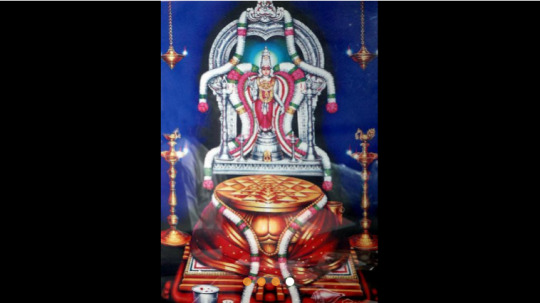
Sri Kamakshi Amman Temple - Mangadu, Kanchipuram, Tamilnadu, India
Sati’s Navel part of the body is fallen here and worshipped as Kamakshi Amman. The Image of the main Deity, Kamakshi, is seated in a majestic Padmasana, a yogic posture signifying peace and prosperity. Goddess holds a sugarcane bow and a bunch of five flowers in the lower two of her arms and has a pasha an ankushain her upper two arms. To read more click the below link
Sri Kamakshi Amman Temple
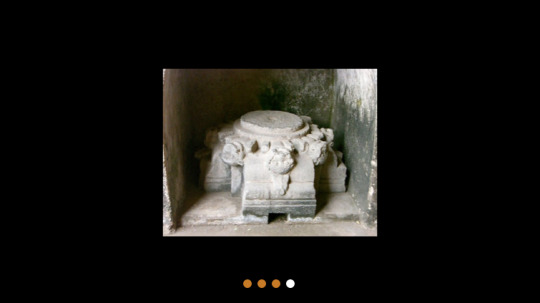
Sri Shrinkala Devi Temple-Pandua, Hooghly, West Bengal, India
Sati Devi's stomach part has fallen here and worshipped as sharinkhala Devi. Shrinkala Devi was supposed to be in West Bengal, Hooghly district. But as such, there is no temple also. A story says that Sage Rishya Shringala has brought to her to shringeri in Karnataka. To read more click the below link
Sri Shrinkala Devi Temple
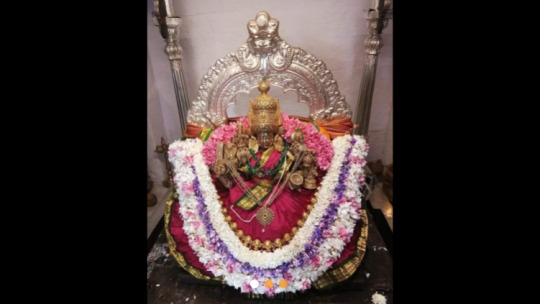
Sri Chamundeshwari Temple-Chamundi Hills, Mysore, Karnataka, India
Sati Devi's head hairs have fallen here and worshipped as Chamundeswari Devi.Parvathi took birth as Chamundeshwari and killed the monster. After killing the demon, the Goddess resided atop the Chamundi Hills, where she is worshiped with reverence and devotion. The goddess is also called Mahishasura Mardini meaning She who slew Mahishasura. To read more click the below link
Sri Chamundeshwari Temple

Sri Jogulamba Devi Temple - Alampur, Jogulamba Gadwal, Telangana, India
Sati Devi's upper teeth row has fallen here and worshipped as Jogulamba Devi. This temple is located at the meeting point of the sacred rivers Tungabhadra and Krishna and is referred to as Dakshina Kashi (also Navabrahmeshwara Theertha) and the Western Gateway of Srisailam, the famous Shaivite pilgrim center ansd was mentioned in the Skanda Purana. To read more click the below link
Sri Jogulamba Devi Temple

Sri Bhramaramba Mallikarjuna Swamy Temple-Srisailam, Andhra Pradesh, India
Sati Devi's neck part has fallen here and worshipped as Sri shaile Bhramarambika Devi. Shiva is worshiped as Mallikarjuna and is represented by the lingam. His consort Parvati is depicted as Bhramaramba. It is one of the only three temples in India in which both Jyotirlinga and Shaktipeeth is revered. To read more click the below link
Sri Bhramaramba Mallikarjuna Swamy Temple

Shree Mahalaxmi Mandir- Kolhapur, Maharashtra, India
Devi's eyes (three) have fallen here and revered as Kolha pure Maha Lakshmi. The murti of the crowned goddess is made of gemstone and weighs about 40 kilograms. The image of Mahalakshmi carved in black stone is 3 feet in height and a stone lion stands behind the statue. The crown contains an image of the Sheshnag, the serpent of Vishnu. To read more click the below link
Shree Mahalaxmi Mandir

Sri Eka Veerika Devi Temple-Manhur, Nanded, Maharashtra, India
Sati Devi's right shoulder has fallen here and is revered as Ekaveerika Devi. Temple is 800 years old. Here pan Patta and supari offer as prasad after grinding it as a paste. To read more click the below link
Sri Eka Veerika Devi Temple

Shree Mahakaleshwar Temple - Ujjain, Madhya Pradesh, India
The upper lip of goddess sati has fallen here and revered as Ujjani Maha Kali. Lord Shiva appeared from the ground and vanquished the Dushana demon. Then, upon the request of the inhabitants of Avanti, Shiva took up a permanent abode here as Mahakaleshwara Jyotirlinga and is believed to be deriving currents of power (Shakti) from within itself as against the other images and lingams that are ritually established and invested with mantra-shakti. To read more click the below link
Shree Mahakaleshwar Temple

Sri Kukkuteswara Swamy Temple-Pithapuram, Andhra Pradesh, India
Sati Devi's left hand has fallen here and is revered as Peethikayam Puruhutika. The idol of Puruhuthika Devi has four hands. They contain a bag of seeds (Beeja), axe (Parashu), lotus (Kamala), and a dish (Madhu patra) from lower-right to lower-left in order. Jaganmata appeared before Lord Indra and blessed him with wealth and testes here upon his Aghora Tapasya. To read more click the below link
Sri Kukkuteswara Swamy Temple

Sri Biraja Devi Temple - Jajpur, Odisha, India
Sati Devi's navel has fallen here and is revered as Odhyane Girija Devi. The Durga idol has two hands (dwibhuja), spearing the chest of Mahishasura with one hand and pulling his tail with the other. One of her feet is on a lion, and the other is on Mahishasura's chest. Mahishasura is depicted as a water buffalo and the crown features Ganesha, a crescent moon and a lingam. To read more click the below link
Sri Biraja Devi Temple
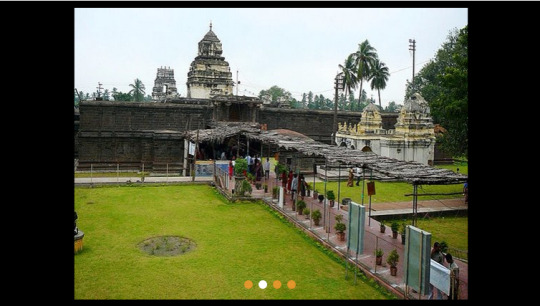
Sri Bhimeswara Swamy Temple-Draksharamam, Andhra Pradesh, India
Sati Devi's left cheek has fallen here and is revered as Manikya Daksha vatike. Draksharama also constitutes one of the five Arama kshetras of Andhra Pradesh and tied to the five Pancharama temples dedicated to Shiva. To read more click the below link
Sri Bhimeswara Swamy Temple

Sree Kamakhya Devi Temple-Kamakhya, Guwahati, Assam, India
Sati Devi's Vulva (yoni) has fallen here and is revered as Hari kshetre Kama rupi. The sanctum sanctorum of the temple in the form of a cave, which consists of no image but a natural underground spring that flows through a yoni-shaped cleft in the bedrock. To read more click the below link
Sree Kamakhya Devi Temple
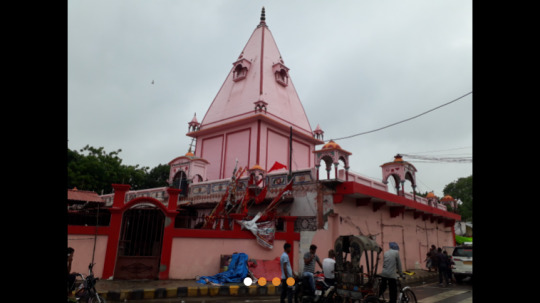
Sri Alopi Devi Temple-Prayagraj, Allahabad, Uttar Pradesh, India
Sati Devi's fingers have fallen here and is revered as Prayage Madhaveshwari. This temple is peculiar in that there is no statute of any deity in this temple, rather, there is a wooden carriage or 'doli' which is worshipped. To read more click the below link
Sri Alopi Devi Temple
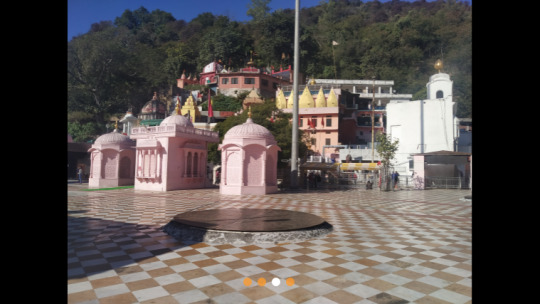
Sri Jwalamukhi Temple-Jawalamukhi, Kangra, Himachal Pradesh, India
Sati Devi's head part has fallen here and is revered as Jwalayam Vaishnavi devi. When demons lorded over the Himalaya mountains and harassed the gods. Lord Vishnu, the gods decided to destroy them. They focused their strengths and huge flames rose from the ground. From that fire, a young girl took birth here known as Adishakti-the first 'shakti'. To read more click the below link
Sri Jwalamukhi Temple

Sri Mangla Gauri Temple-Gaya, Bihar, India
Sati Devi's head Devi's breast part has fallen here and is revered as Gaya Mangalya gourika. The Mangalagauri temple has been mentioned in Padma Purana, Vayu Purana and Agni Purana and in other scriptures and tantric works. To read more click the below link
Sri Mangla Gauri Temple
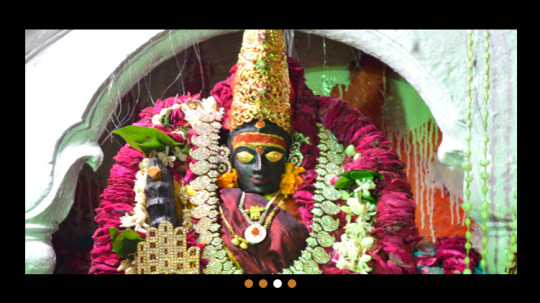
Sri Vishalakshi Temple-Varanasi, Uttar Pradesh, India
Sati Devi's wrist has fallen here and is revered as Varanasyam Vishalakshi. It is also said that the Karna kundala(Ear ring) of Devi fell here and hence Devi Maa here is also known as Manikarni or Manikarnika. The Puranas say that this city exists even after the Pralaya. To read more click the below link
Sri Vishalakshi Temple

Sri Sharada Peeth-Sharda, Jammu and Kashmir, India
Sati Devi's right hand has fallen here and is revered as Kashmire tu Saraswati. Though in ruins now, the entire temple complex inspires grandeur and awe. The temple had a massive library attached to it which had priceless works and was also used by scholars from even neighbouring countries. To read more click the below link
Sri Sharada Peeth
2 notes
·
View notes